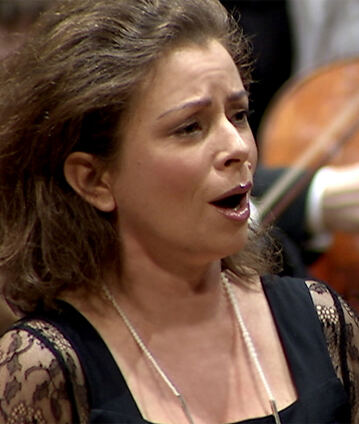Simon Rattle conducts Mahler’s Fourth Symphony

The sound of sleigh-bells at the beginning make it clear from the outset: Mahler’s Fourth Symphony does not want to show off, but to take us to a magical kingdom. Mahler himself said, “It is the serenity of a higher, unknown world”, which, as he adds, “holds something gruesome and ghastly for us”. In this concert, Simon Rattle combined the work with Stravinsky’s graceful ballet music Apollon musagète.
“Two iconoclasts tamed” – is how this evening’s concert could be titled, for in Stravinsky’s ballet music Apollon musagète, 20th century modernism has never been so classically balanced. And also in Mahler’s Fourth Symphony, we meet a composer who often enough challenged and pushed his audiences, but in the case of the Fourth Symphony, he struck an unusually relaxed tone.
After Mahler’s lengthy and heavily orchestrated gigantic Third Symphony, the Fourth comes across like a detox treatment. With its comparatively speaking light orchestration, and lasting only an hour, this work includes performance markings such as “recht gemächlich” (very leisurely) and “sehr behaglich” (very comfortably), warning us against emotional excess. And then, the finale – no monumental climax, but a song of almost tantalizing simplicity. But one should not allow oneself to be fooled: just as in Mahler’s other symphonies, the Fourth also contains a twist. Moods change almost unnoticeably, expectations are dashed, and in the apparently naive idyll, yawning chasms are never far away. The soloist is Christine Schäfer.
In a similar way to Mahler’s Fourth Symphony, Stravinsky’s Apollon musagète also creates a counter world to earlier, more expressive works. Stravinsky, who had shaken the music world with ballets such as Le Sacre du printemps, cultivated a more controlled tone in subsequent compositions, based on older forms and models. In Apollon musagète, his inspiration is French music of the 17th century. The ballet describes an encounter between Apollo and three muses, but no real narrative is developed. Stravinsky’s dramaturgical and musical intention in this work is the greatest possible balance rather than dynamic development.
© 2011 Berlin Phil Media GmbH
Related interviews
Artists
Our recommendations
- Claudio Abbado conducts “Songs of Love and Desire” at the 1998 New Year’s Eve Concert
- Simon Rattle conducts Berio and Bartók
- 2017 New Year’s Eve Concert with Simon Rattle and Joyce DiDonato
- Simon Rattle conducts Bruckner and Widmann
- Simon Rattle conducts Shostakovich’s Fourth Symphony
- Dance project: “Surrogate Cities”